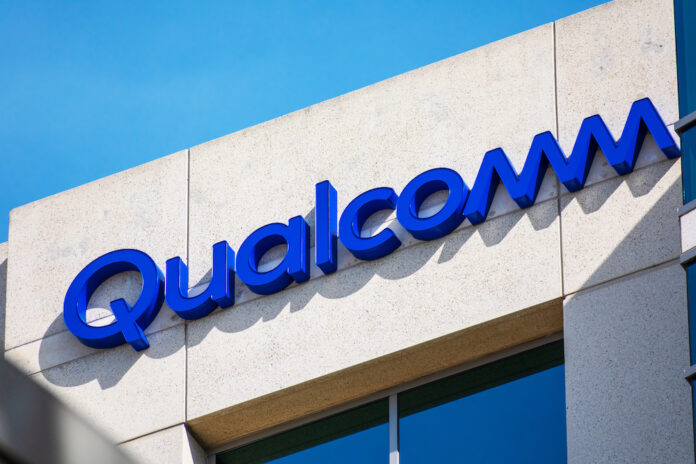Vendor says it is the world’s first approved Automated Frequency Coordination System Administrator (AFCSA) for a commercial operation
Canadian authorities have designated Qualcomm as an Automated Frequency Coordination System Administrator (AFCSA) in Canada meaning it can deploy its system commercially. The move is a major step in the future assignment and development of the 6GHz band – coveted by wi-fi vendors and mobile operators for future wireless services.
The US and Canada, plus a relatively small number of countries around the world, assigned the whole 1200MHz of the 6GHz band to unlicensed wi-fi to encourage Wi-Fi 6E and Wi-Fi 7 innovation. In contrast, many countries have followed the GSMA position to split the band; where 6425-7125MHz is made available for licensed 5G by 2030, while 5925-6425MHz should be considered for licensed 5G, or licence-exempt on a technology-neutral basis.
For 6GHz to work as an unlicensed band various traffic management systems like Automated Frequency Coordination (AFC) have been proposed and need to be implemented to avoid interference. AFC systems, for example, allow standard power Wi-Fi 6E and 5G NR-U devices to transmit at up to 63 times higher power, while avoiding interference with incumbent users in the band.
AFCSAs operate the AFC systems which determine the spectrum available for use by registered licence-exempt standard-power radio local area network (RLAN) devices while ensuring the appropriate protection of licensed systems operating within the same frequency range.
Once established by the AFCSA, the AFC system would be used to obtain the locations of registered licence-exempt standard-power RLAN devices as well as the locations and frequencies of protected licensed systems. The AFC system will also inform a registered licence-exempt standard-power RLAN device operating in the band regarding the available frequencies for use at the device’s location.
The AFCSA would also manage a database of existing 6GHz operators, including geolocation, frequencies, power levels, antenna coverage, and so on, typically gleaned from the regulator’s existing tower registration database.
Before transmitting, a standard power access point consults the local AFC system to validate frequency operation. The AFC will either approve the usage request or provide alternatives or available channels.
Higher wi-fi power levels
Qualcomm’s AFC Solution supports location-based power optimisations for 6GHz transmissions, is designed to enable higher wi-fi power levels to be used in access points indoors and outdoors and delivers higher performance and longer range while protecting existing incumbent users.
The Innovation, Science and Economic Development Canada (ISED) designation makes Qualcomm the world’s first AFC system operator approved for commercial operation, at least in Canada, with pending FCC approval in the United States.
“We are excited by and applaud the approval from Canadian Innovation, Science and Economic Development,” said Qualcomm VP and GM wireless infrastructure and networking Ganesh Swaminathan. “With our complete AFC solution, we are positioned to deploy scalable, turnkey cloud-to-silicon services to maximize 6GHz wi-fi performance. With this approval, we can now accelerate our customers’ standard power access point deployments in Canada and stand ready to expand to other regions.”
Wait and see from regulators on 6GHz
Regulators around the world have adopted a wait and see approach around their plans for the band – a potential decision on the band’s future at ITU World Radiocommunication Conference 2023 (WRC-23) at the end of the year. Some regulators, like the Australian Communications and Media Authority, have chosen to let the market sort out things like the technology and databases required to run an AFC system properly.
While the WRC-23 agenda discusses the entire 6425-7125 MHz band in only the EMEA region, The GSMA emphasises there is support for using this spectrum for licensed mobile throughout the world. The organisation pointed to Chile’s about face on initially assigning the whole band to unlicensed spectrum but opting now for the upper/lower split.
Rather than choosing to only be in wi-fi or mobile camps, UK regulator Ofcom has opted for what it calls hybrid sharing that would enable the use of both wi-fi and mobile in the upper 6GHz band. Its logic is that wi-fi routers tend to be indoors and mobile outdoors so there could be a model for indoor use of wi-fi while also enabling licensed mobile use outdoors.
Such a solution would be impossible without traffic management from something like AFC. In June, ETSI and The Wireless Innovation Forum looked at dynamic spectrum sharing use cases concluding that AFC and evolved Licensed Shared Access – geographic licences that must deliver a specific QoS – could be possible candidates for a sharing framework that ensures incumbent protection.



